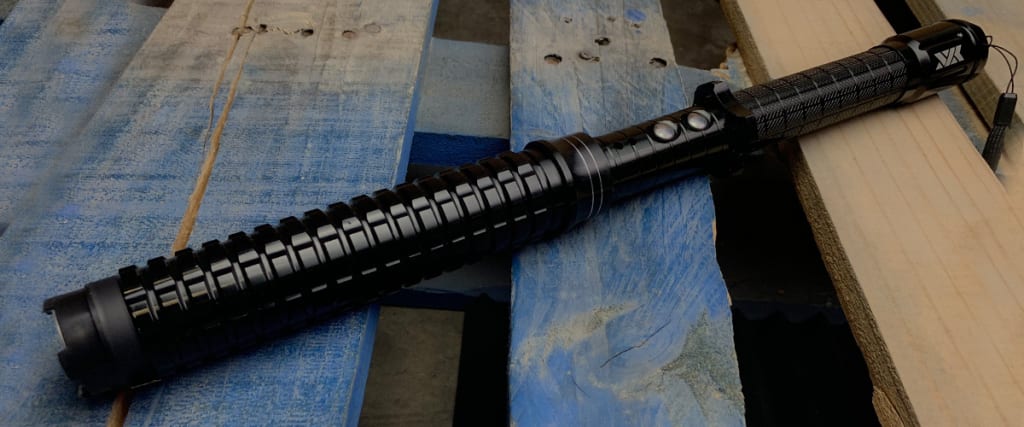Anatomy of Stun Guns: Their Self-Defense Uses!
Stun Guns

Stun guns are designed primarily for use by law enforcement and military personnel in situations with a high risk of violence and require the ability to hinder either an individual's physical or mental state. In more common applications, these guns release a high-voltage pulse to generate an electric charge capable of briefly disrupting or disabling the central nervous system.
To target specific areas of the body, each stun may come equipped with a contact prong made from metal, wood, or rubber that can be pressed against various surfaces depending on the targeted location. These devices have been used in attempts at suicide prevention as well as self-defense against animal attacks by zapping their legs before they can sink their teeth into vulnerable parts of your body.
This is a device used in ways similar to cattle prods, with the intention of temporarily incapacitating an individual. These guns are mainly used by law enforcement and military personnel to subdue unruly individuals or groups, allowing civilians to use them as instruments of self-defense without lethal force.
Components of Stun Guns:
Some days, it seems like life is just one thing after another. As hard as we try to make our way through this world without incident, we may find ourselves in a situation where our life is at stake. One of the most important tools you can use in this type of situation is something called a stun gun (also known as a taser).
Whether you want to use your gun at work, at home, or while defending somebody else from harm, knowing what its parts are will give you the edge needed to protect yourself and possibly save someone else's life. Here's what you need to know about its parts:
- The body of this gun contains two pieces: a barrel and a trigger assembly. It is attached to the end of a T-shaped antenna that extends from the bottom.
- The barrel is smooth on the outside and has an electrically conductive surface on the inside. It's attached to a spring mechanism that retracts or extends it depending on how you hold your stun gun. Inside this barrel are two metal prongs (called electrodes) that can deliver a high-voltage shock when stimulated by the trigger.
- The trigger assembly consists of two parts: a power source and a trigger. This assembly is housed in either a handle or pistol grip depending on whether you have an electric stun gun or baton style stun gun respectively. Usually, the power source of these devices is a 9-volt battery, but some of them use rechargeable batteries. The trigger part of the assembly is usually made up of two metal probes that are attached to the prongs in the barrel and complete the circuit when they meet the skin.
- The antenna is a T-shaped rod that extends from the bottom of the body. It has an electrically conductive surface on one side and an insulated coating on the other side. This antenna transmits electrical impulses between your gun and any conductive object you touch with it.
- Some stun guns also have a safety switch, which can be either on or off depending on how you want to hold your stun gun.
Use of Stun Guns for Self-Defense
The self-defense use of stun guns is versatile, with one of the most popular uses being to incapacitate a person so that you can attack them and take away their means of fighting back. These weapons make an excellent choice for women, who often find themselves in physical confrontations with men.
They can also be very useful in cases where the use of deadly force is not applicable. Their effective range is about 4 feet (1.2 meters) and they are only effective on average 80% of the time. Although they may not be as reliable as firearms, these devices have proven to be quite deadly enough when used properly. These guns are hands down one of the most useful legal weapons available to us today.
They are potentially the best non-lethal alternative for self-defense available today and should be considered as a deterrent when it comes to personal protection. The voltage delivered by these devices is generally in the range of 50,000 to 500,000 volts. The exact voltage depends on the device itself and can be altered by anything from environmental conditions to human variables such as body composition and clothing.
When it comes to self-defense you want something that will not necessarily disable your target but will put them out of commission for a few key seconds so you can subdue them with minimal risk to yourself.
Risks Associated with Stun Guns:
Stun guns generate significant controversy. They are legal and readily available, but the risks associated with them can be considerable. A gun, or Taser, is an electroshock weapon that uses high-voltage current to temporarily stun a person. There are two types of these weapons: contact and non-contact. Contact weapons require touching the target with the weapon's electrodes on one end, while non-contact devices can fire up to 18 inches away.
The powerful electric pulse renders the muscles temporarily inactive and causes extreme pain, with no lasting effects. A more recent development is a device that delivers a painful but non-lethal electric shock without physical contact: it emits barbs connected by wires to large battery packs worn by both assailant and victim; when activated, the barbs make 20 muscular contractions before retracting so that they may be reused.
Stun guns have caused controversy because of their potential to cause serious bodily harm or death. Police say the devices stop combative suspects before they can seriously injure or kill officers and civilians. Research on these guns has revealed a higher risk of death or serious injury than originally predicted, but safety concerns still exist.
About the Creator
Mai Sophia
A Writer/blogger by day, a knife enthusiast and survivalist by night. I've reviewed a lot of products and have helped people make the right purchase






Comments
There are no comments for this story
Be the first to respond and start the conversation.